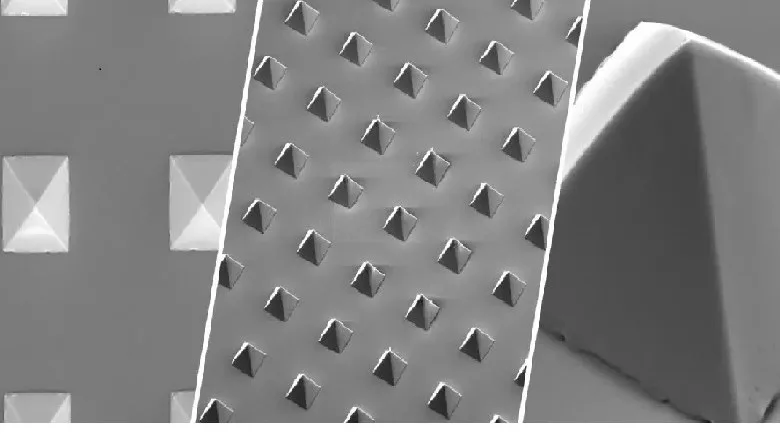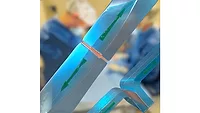'Crushing' Chemical Research has Potential for More Sustainable and Cost-Effective Chemical Manufacturing

Three views of polymer pen arrays used to study mechanochemical reactions. Courtesy of Daniel Valles and Yerzhan Zholdassov - Advanced Science Research Center, City University of New York
Scientists are working to reveal the atomic-level mechanisms inside the crushing and grinding of mechanical chemistry, with the potential to scale up their advances to make chemical manufacturing more sustainable and cost-effective.
Understanding the atomic-scale mysteries of "crushing" chemistry is the goal of an expanding research center with a newly awarded $20 million investment from the U.S. National Science Foundation. Managed by Texas A&M University, NSF's Center for the Mechanical Control of Chemistry (CMCC) will conduct the most rigorous exploration yet into how the mechanical application of force can enable new advances in chemistry, with the potential to make industrial processes cheaper and more environmentally friendly.
Mechanical chemistry, or mechanochemistry, is the crushing of chemicals to produce reactions and substances. It has long been used by humans and nature; diamonds are created when carbon is squeezed under enormous pressure inside the earth, while mechanical chemistry has been used to grind out everything from pigments in Renaissance-era paintings to medicinal compounds. The atomic-scale processes at these crushing transformations are not fully understood or predictable. Moreover, while heat or light are often used to impart the energy needed to make and break bonds in chemical reactions, the use of mechanical force to impart that energy and drive new types of chemistry remains an underexplored frontier.
"Using traditional chemical methods, chemists have discovered many effective ways to create substances that have enhanced human health and prosperity … But such substances could potentially be produced in a more sustainable way through undiscovered techniques of mechanical chemistry," said NSF Assistant Director for Mathematical and Physical Sciences Sean L. Jones. "NSF's Center for the Mechanical Control of Chemistry will focus on providing the insights necessary for innovative minds across America to scale it up."
The center itself is being scaled up. The $20 million from NSF is a phase two award from its Centers for Chemical Innovation program, which supports multiple centers aimed at solving fundamental challenges in chemical research and developing subsequent innovations. CMCC received a $2 million phase one award in 2020. The additional funding will enable the center to become a nexus for mechanical chemistry research across the United States by supporting work at 11 U.S. institutions in nine states.
The new funding will provide the center with various instruments capable of investigating the effects of mechanical force at the atomic level, including atomic force microscopes, electron microscopes, and high-pressure diamond anvils. The center will help grow the scientific workforce through training and mentorship for early-career postdoctoral researchers, undergraduate and graduate students, and it will conduct educational outreach activities with local K-12 students and teachers.
To learn more, visit www.new.nsf.gov.
Looking for a reprint of this article?
From high-res PDFs to custom plaques, order your copy today!





